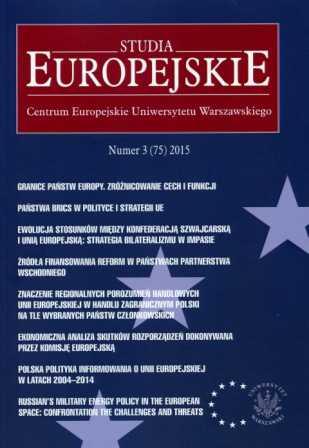Granice państw Europy. Zróżnicowanie cech i funkcji
European Countries’ Borders. The Diversity of Features and Functions
Author(s): Marcin Kałuski, Stefan KałuskiSubject(s): History, Social Sciences, Geography, Regional studies
Published by: Centrum Europejskie Uniwersytetu Warszawskiego
Keywords: frontiers; borderland; transborde cooperation
Summary/Abstract: The aim of the article is to present differentiated features and functions of the contemporary Europe countries’ borders. We can notice an explicit dualism of forming their current course and meaning. The maps from various time periods in Europe are entirely different images. What contributed to it are changes of borders as a result of conquests, wars, separatist movements, disintegration of some countries and unification of the others. There remained marks in the landscape: fortifications, bunkers and watchtowers. The idea of European integration was born in this area. There is even a popular saying “Europe without borders”. Right after the end of World War II, an idea of the United States of Europe was postulated and a few years later arose The Iron Curtain – a chain of heavily guarded borders that divided Europe into the two different political units. Its collapse started an age of diminishing obstacles regarding border barriers and finished up in a world phenomenon – Schengen area. These two trends indicated in the article are exemplified with roles of spatial barriers as well as cross-border cooperation.
Journal: Studia Europejskie
- Issue Year: 19/2015
- Issue No: 3 (75)
- Page Range: 9-30
- Page Count: 21
- Language: English, Polish

